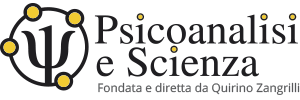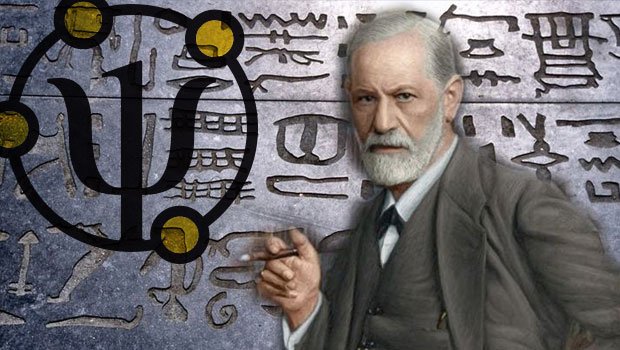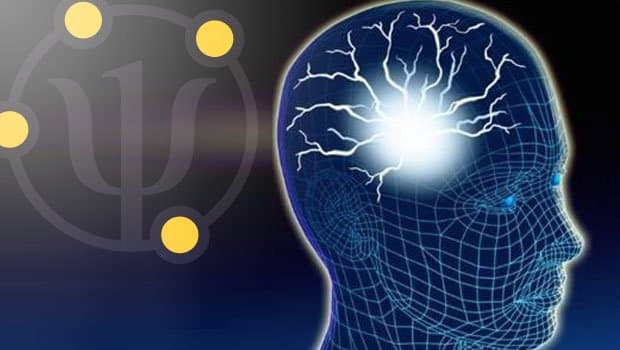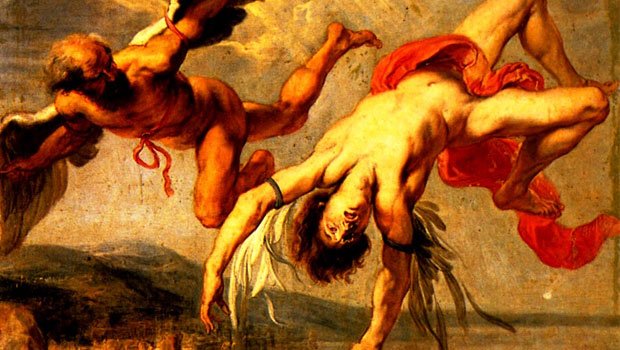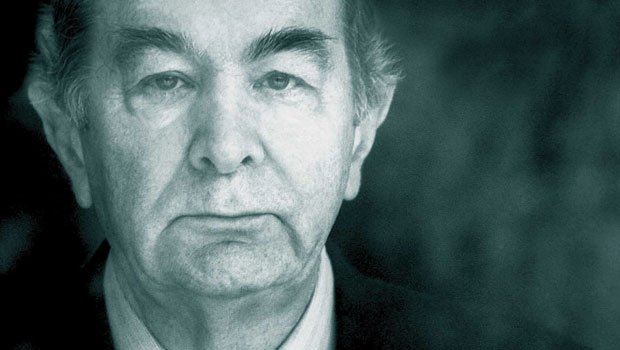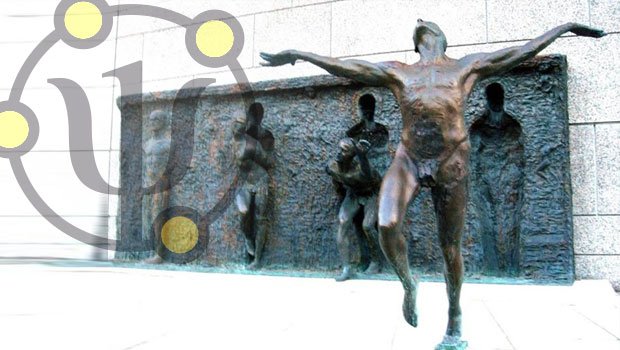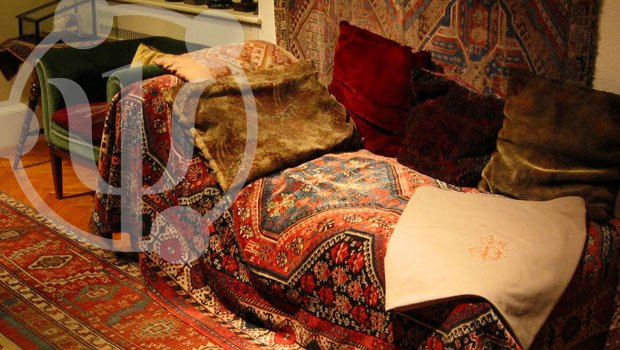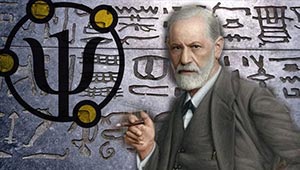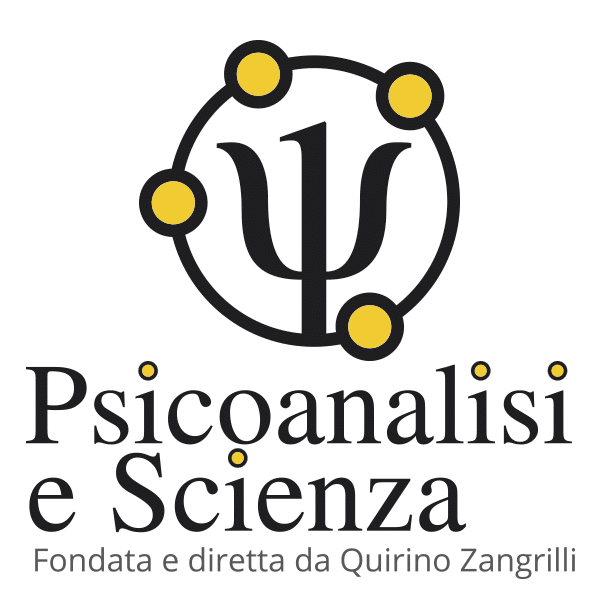The word “Medicine” derives from the latin word medicus, from mederi (= to cure) which derives from an Indo-European root med- with the original meaning of ‘magic and sacred’, nowadays used only in an old Iranian language and in Latin, whilst in other languages it has assumed the sense of ‘to understand’ and ‘to Know’. In Sanskrit medha (= knowledge), in Greek mèdomai (= I take care of), in German messen (= to measure). 1
I began with the illusion of wanting to possess the ‘Art of taking care of’, obtaining a Degree in Medicine and Surgery, I progressively realised that the Doctor is only one of the many variables in play in such a strange equation which is defined as ‘illness’, and I ended up dedicating myself to the branch of Medicine called Psychoanalysis (at least as a derivation of trial: Freud was a medic and he remained so until the end of his days and only the arrogant ignorance of the medical class of his time expelled from its womb such a fertile fruit) to become part of the meagre team of those who are satisfied of knowing the reality through scientific means: epistemology (from the Greek episteme “scientific knowledge”) and -logie (theory).
Whoever is interested in general knowledge cannot accept in his mental processes any kind of ideological prejudice and it is evident to me how modern Medicine is, unfortunately, becoming the foolish servant of the Chemistry enslaved by the economic interests of the multinational companies of the pharmaceutical sector.
It is sufficient to think of the process of falsification of the reality conducted, through a cynical and efficient media campaign, in the psychopathological field: if one reads the majority of the media it would seem that the mental illness is a mere factor of chemical mediators and that it would be sufficient to guess the right mix of psycho-drugs to give the health and the tranquillity back to the patients.
It would be enough to visit an Institute of Mental Health (where the staff, with a highly cultural background, work with absolute dedication and who dedicate the majority of their energy to the therapy of chronic illnesses) and to observe with a mind free from prejudices the chronic patients to gain a true idea of the efficacy of the psycho-drugs in the prospects of recovery from the psychic disturbance.
Before someone begins to protest I want to be absolutely clear about this point: I am not “against” psycho-drugs; a psychoanalyst cannot be “contrary” or “in favour” of anything. I regard them useful as anguish containers in some border-line pathologies and irreplaceable in chronic psychosis. But, as I have been trying to help people for the last twenty years to eliminate modalities of organisation of their vital attempts, denominated “psychic pathologies” from their existence, I have verified personally (de visu) the absolute efficacy and the resolving power (healing) of the psychoanalysis. The fact is that Psychoanalysis is an almost unknown scientific method, since it is practised by very few professionals. Try asking your friends and the people you know who undergo psychoanalytic treatment, how often the sittings are: the majority will answer you that they meet with their Analyst once, twice or at the most three times a week.
In the Dictionary of Psychoanalysis by the “American Psychoanalytic Association” 2 , under the entry “Psychoanalytic Technique” we can read: “…typical aspects of the psychoanalytic technique are: 1. More or less daily sessions (usually four or five per week)…”
I underline the fact that the frequency is almost daily. You must not think that this is the result of a bizarre caprice of a Stakhanovist pioneer: the daily frequency and the intensity of the treatment are factors which cannot be renounced for the efficacy of the therapy. A study by the “Stockholm Outcome of Psychoanalysis and Psychotherapy Project (STOPPP)”, entitled “Varieties of Long-Term Outcome Among Patients in Psychoanalysis and Long-Term Psychotherapy”, of which I would like to cite some lines, demonstrates it in an unequivocal way: “Our analyses revealed progressive improvement the longer patients were in treatment, impressively strong among patients in psychoanalysis on self-rating measures of symptom, distress and morale. Improvement, however, was equally weak in both groups on a self-rating measure of social relations. Dosage factors (treatment duration and session frequency in combination) partly accounted for the outcome differences between those referred to psychoanalysis and those referred to long-term psychotherapy.”3
The majority of the Psychoanalytic Schools have ended up devaluing the contents of Freud’s Science, paying the price of a loss in efficiency and credibility, giving in to the social pressure in a world which wants everything and immediately.
On the contrary, the Schools that have not given in to the rigour of the contents and the practical application of the method are, not only, alive and kicking, but enjoy a renewed enthusiasm in the scientific research. And, unfortunately, they become the cause of scandal and the object of aggressiveness, since they remind us of what we should do.
Psychoanalysis and Micropsychoanalysis, when conducted respecting the rules, demonstrate an incomparable therapeutic efficacy which leads to, in the majority of the pathologies treated, a complete recovery (restitutio ad integrum). Of course the patient must accept the idea that he has to invest a part of his time and his money for a couple of years (micropsychoanalysis) or more (psychoanalysis).
On the other hand, nobody would ever dream of contesting forms and therapeutic times of other somatic pathologies. A profound ambivalence towards psychoanalysis exists and the problem derives from the fact that the majority of people do not possess the tools to “dominate” this world.
It is the same reason for which many people oppose the idea that Psychoanalysis is a Science. Nicola Peluffo, in his illuminating work “Appunti sulle resistenze” (Notes About Resistances) 4 writes: “… Resistances are not verified only during an individual psychoanalysis but they also manifest themselves as a collective opposition towards the psychoanalytic science. As it is known, these face themes that the attempts of adaptation to the cultural environment which are present in a determined historical moment, consider, or better still, perceive as lawful only through the adhesion to one or more systems of ideological explanation which have the power of moral laws.
Even today, after years of verification, there are still those who deny the existence of the primary process and in particular the existence of the unconscious as a system.
The verifications which are made during the sessions are not considered valid because they are not communicable if the access code, which presents the experience necessary to understand, is not possessed. I will explain this with an analogy. The dual nature of light (wave-particle), posed for years great problems to whoever dealt with physics. Dirac resolved the problem by discovering the quantum field theory. This was not enough for many “cultured men”, observers of a more or less philosophical derivation and they continued to affirm that the mystery of the wave-particle duality had not been revealed because it was impossible to explain in an ordinary language, but only using a mathematical instrument, in other words a code that not everyone understood.
J.C. Polkinghorne, regarding this, writes: “… in these discussions, in fact, a mathematical consideration is implied (which can be used to give a perfect articulation to the wave/particle idea) as intrinsically inferior inasmuch as an irrational modality, to the ordinary language (which on the contrary is not adequate for the task). It is like thinking that the existence of the unseen companion of Sirius is less certain since it cannot truly be seen and its presence is only deduced from its gravitational effect upon Sirius. As if gravity were less real than light. No! Mathematics is the perfect language for this kind of activity and it shows its power penetrating further than the ordinary dialectic between waves and particles up to the synthesis of a quantum field” (J.K. Polkinghorne, il mondo dei quanti, ed. Garzanti 1986, pag 23-ss).
The unseen companion of Sirius can be detected only if the mathematic code which makes it evident is known; the same thing happens for the unconscious derivates which come out of the latency period, in other words, from the obscurity (“sub umbra latere”) using the associative language of the micropsychoanalytic session.
Whoever continues to oppose such an evident point of view, could be defined as affected by the unseen companion syndrome, or affected by to the Sirius Complex.
The denial of the existence of the unconscious can be defined as the Sirius Complex. He who is freed, at least in part, from the unseen companion syndrome or better still from the Sirius Complex, causes scandal. Within the society for himself and for others, and during the session for himself in relation to the ideal image of the Other, therefore, of the Ego ideal/super-Ego”.
Another difficulty of accepting the therapeutical efficiency of the psychoanalysis, moreover confirmed by the majority of those who have undergone and concluded it (it is singular that only for psychoanalysis the motto “Experto credite” [trust he who has experience] is not valid) resides in the fact that nothing of which happens within the analyst’s study is concretely tangible or measurable.
The scientific popularisation has made us so accustomed to the idea “Science is equal to measurement” that many people ignore a fundamental concept of the Physics applied to the phenomena which take place in the atomic and nuclear field, the Uncertainty Principle by Werner Heisemberg, according to which the precise measurement of a physical quantity determines uncertainty in the measurement in other Observables.
Many people are contrary to Psychoanalysis because it is a Science “sine materia” (without matter), in the same way in which they are contrary to Homeopathy. But, at the same time, they continue using computers managed by software without matter, until now written in magnetic hardware supports but, in the future, coded by photonic quantum with mass = 0.
Whilst in the actual computers the classic physics is used, codifying bits through electrical on or off switches, in the quantum computers the information is stored using the two different polarisations of light or two different electronic states of an atom. Some researchers of the Michigan University have conducted an experiment making a computer assign, in a random manner, data to the quantum state of a Caesium atom.
To sum up, information is “written” using variations of the transition state of matter, without needing an extra support. The main criticism that is made towards homeopathy is that at high dilutions, exceeding the Avogadro constant, there would no longer be any trace of the medical substance (mother tincture) used.
The homeopaths well know, however, that the granules which have come into contact with the therapeutic substances absorb information which activates coded answers in the organism.
Homeopathy, during its course of edification and in its conception of the human being, presents surprising analogies with psychoanalysis.
Both of its founders, Hahnemann and Freud, began from the reiterated observation, free from prejudices, of phenomena, to then reach the theoretic hypotheses.
Both of the disciplines are based on human experimentation and not upon diverse biological models, from which it is possible to deduce, by analogy, human mechanisms.
As in psychoanalysis, Homeopathy takes into account the defence function of the symptoms and as a consequence, avoids merely symptomatic treatments, aiming at the reconquest of an equilibrium state pre-traumatic.
The so-called “homeopathic aggravation”, which consists of an actual reappearance of the illness, that had determined the perturbation of the homeostasis of the system, is completely similar to the concept of the “transference neurosis” in psychoanalysis: an actual reappearance of the pathological history of the patient, projected into the relation “psychoanalyst-analysed”.
The remedies of the pelvic-anal zone are the same as the oral zone: a concept similar to the “sphincteric equivalences” sustained by the psychoanalysis, particularly by the micropsychoanalytic school.
Both have encountered enormous resistances in being, if not accepted, at least tolerated by the social body and have ended up affirming themselves only thanks to their evident efficacy.
The fact is that both disciplines force the human being to consider anguishing phenomena tied to the perception of the phenomenology of the Void.
The great Hungarian thinker Ervin Laszlo 5 writes: “There is no valid reason to consider matter as primary and space as secondary. It is to the space – or better still to the “Dirac sea” of the vacuum which pervades the cosmos – that we should recognise primary reality … (the space-time) is a “plenum” (…) which can create shapes and waves. Light and Sound are waves in movement in this continuous energetic field”. 6
Exposing his conception of life, Laszlo affirms: “It seems that the interactions with the quantum vacuum are not limited to the elementary particles, but they can also involve macroscopic entities such as the living systems … torsion phantoms, metastable, generated by the interactions of spin torsion, can also persist in absence of the objects which have generated them”7
And also: “The existence of these phantoms in the case of living tissues has been confirmed by the experiments performed by Vladimir Poponin and his group at the Institute of Biochemical Physics of the Russian Academy of Sciences. Poponin, who later repeated the experiment at the Heartmath Institute in the United States, placed a DNA sample in a scattering chamber at a controlled temperature and subjected it to laser radiation. He ascertained that the electromagnetic field surrounding the scattering chamber showed a specific structure, more or less as expected. But he observed that this structure remained long after the DNA in question had been removed from the chamber which was irradiated by the laser. The DNA imprint in the field continues to be present even when the DNA sample has been removed”. *
A person who is capable of reasoning would find, at this point, difficulty at least in continuing to sustain that “Homeopathy is not a science because in its granules there is nothing!” or that “Psychoanalysis and Micropsychoanalysis are not a science: how can words cure you?”.
The fact is that, and psychoanalysts know it well, the mechanism of isolation exists 8 , which it would appear, is becoming endemic.
On my behalf I believe that the future of the Research in psychological sciences and in neurosciences will be characterised by the study of information and by the supports of memorisation (I certainly do not intend referring only to the cellular support of the brain). Freud, as I have evidenced in another work, 9 had already prefigured, in his studies on the fixation, a cybernetic model of the mind, interpreting the fixation as a fault in the transcription of information during the course of the various evolutive stages of the human mind.
All those who utilise a computer know that there is an incessant decay of the quality of the information memorised: one part of the data “deteriorates”, or links , which allow the CPU of the computer to reach the cells in which the data is stored, disappear, in other words micro-zones, isolated from the general context or coded in an unrecognisable language, are created and these determine interfering events in the free circulation of information. In the human being, through the psychoanalysis, if we want to be a little prosaic, the equivalents of these aberrant nuclei, are progressively individualised, information and encapsulated energies (Affect) are extracted and coherent links between memorised data and CPU (Ego) are re-stabilised.
Of course the comparison between psychoanalysis and Norton Utilities 10 will not be very pleasing to those who have transformed the discipline into a philosophical-aesthetic and intellectual research, but it is most certainly closer to the reality.
Written by: Quirino Zangrilli © Copyright
NOTE:
1 Barbara Colonna, Dizionario etimologico della lingua italiana, Newton & Compton, Genova, 1997.
2 Dizionario di psicoanalisi dell’American Psychoanalytic Association, Sperling & Kupfer, 1993.
3 http://www.ijpa.org/sandelloct00.htm (132 Kb)
4 Appunti sulle resistenze, Notiziario dell’ Istituto Italiano di Micropsicoanalisi, n° 4, Ed. Q. Zangrilli.
5 President of International Society for the Systems Sciences (ISSS).
President of The Club of Budapest.
Founder/Director of The General Evolution Research Group Science.
Director of International University of Peace of Berlin.
Administrator of the Universit» Interdisciplinaire de Paris (UIP). Chairman of International Advisory Board, Auroville Foundation.
Adviser Director-General of UNESCO.
Adviser International Yehudi Menuhin Foundation.
Fellow The World Academy of Arts and Scie nce.
Associate Member The Club of Rome.
6 Ervin Laszlo, Nuovi concetti di materia, vita e mente, Pluriuniverso, anno I,n° 5 dicembre 1996.
Consulta anche: http://pconf.terminal.cz/participants/laszlo.html.
7 Ervin Laszlo, op. cit.
8 Isolamento: meccanismo di difesa, tipico soprattutto della nevrosi ossessiva, che consiste nell’isolare un pensiero o un comportamento in modo che siano rotte le connessioni con altri pensieri o con il resto dell’esistenza del soggetto stesso. (Laplanche e Pontalis, Enciclopedia della Psicoanalisi, Laterza, 1968).
9 La rimozione, Atlante di Psicoanalisi, Scienza e Psicoanalisi, Zangrilli-Fornari.
(https://www.psicoanalisi.it/psicoanalisi/atlante/voci/rimozione_atla.htm ).
10 Le Norton Utilities costituiscono il più famoso pacchetto software per la riparazione dei supporti di memorizzazione informatica.
* – Gariaev P.P., > Chudin V.I., Komissarov G.G., Berezin A.A., Vasiliev A.A., 1991, Holographic > Associative Memory of Biological Systems, Proceedings SPIE – The International > Society for Optical Engineering. Optical Memory and Neural Networks. v. 1621, > p.280- 291. USA.
– Gariaev P.P., “Wave based genome”, Ed. Obsh. > In Russian (1994)
– P.P. Gariaev, K.V. Grigor’ev, A.A. Vasil’ev, V.P. Poponin and V.A. Shcheglov. Investigation of the Fluctuation Dynamics of DNA Solutions by Laser Correlation Spectroscopy. Bulletin of the Lebedev Physics Institute, n. 11-12, p. 23-30 (1992).
– P.P. Gariaev and V.P. Poponin. Vacuum DNA phantom effect in vitro and its possible rational explanation. Nanobiology 1995 (in press).
Una lettera del Dott. Peter Gariaev
In data 22 agosto 2002, il Direttore editoriale di “Scienza e Psicoanalisi”, ha ricevuto questa lettera di precisazione da parte del Dott. Gariaev che volentieri pubblichiamo:
Dear Sirs!
About the detection of the “DNA Phantom effect”.
Peter Gariaev has seen the effect for the first time in 1985, when he worked with correlation spectroscopy of DNA, ribosomes and collagen in the Institute of physics/techniques problems Acad. Sci. of the USSR.
However, to publish it, was possible only in 1991 (Gariaev P.P., Chudin V.I., Komissarov G.G., Berezin A.A., Vasiliev A.A., 1991, Holographic Associative Memory of Biological Systems, Proceedings SPIE – The International Society for Optical Engineering. Optical Memory and Neural Networks. v.1621, p.280- 291. USA.), and then in (Gariaev P.P., “Wave based genome”, Ed. Obsh. Pl’za, 279p. In Russian (1994)), where the biggest chapter of the book is devoted to this effect.
In 1995 Poponin has received an invitation in USA and has offered, as continuation of the joint work with Peter Gariaev in the Lebedev Physical Institute of the Russian Academy of Sciences, again jointly to publish an article about the DNA phantom effect in USA. Peter Gariaev agreed and gave him the diagrams and the description of the method. Then an article “of Poponin” with the data of Peter Gariaev appeared in the internet 1995, but without his participation.
In this article Poponin refers to the joint publication (Gariaev, K.V. Grigor’ev, A.A. Vasil’ev, V.P. Poponin and V.A. Shcheglov. Investigation of the Fluctuation Dynamics of DNA Solutions by Laser Correlation Spectroscopy. Bulletin of the Lebedev Physics Institute, n. 11-12, p. 23-30 (1992))
But this paper is ONLY about the DNA fluctuation dynamics, investigated by a method with laser correlation spectroscopy, and there is no relation to the DNA phantom effect.
With best regards
Peter Gariaev, Ph.D.
Nel 2024 riceve il Premio Accademico d’Onore della Accademia Culturale Internazionale Cartagine 2.0.
Nel 2024 docente ad Almaty – Kazakhstan presso il workshop di psicoanalisi sul tema della violenza, promosso dall’Università di psicoanalisi di Mosca in collaborazione con l’Istituto svizzero di micropsicoanalisi.
Doctor Quirino Zangrilli was born in Fiuggi in 1955. Graduated with honours in Medicine and Surgery in 1980, he practices Psychoanalysis, with intensive method, since 1982. He is author of 72 scientific pubblications. He has attended as speaker or president of session to many national and international scientific Conventions. His book “La vita:involucro vuoto” (Life: empty involucre), published by Borla in 1993, has been in use by the Chair of Dynamic Psychology at Turin’s University since 1994. He is the author and founder of the multimedia review “Psicoanalisi e Scienza” (Psychoanalysis and Science), the most read Italian on line review of psychoanalysis. In 2012 he participated as a Speaker at the Scientific Festival of BergamoScienza. In 2013 he illustrated his research on the maternal-fetal interaction in the Special Session of the XI World Congress of Perinatal Medicine in Moscow with his relation “Intrauterine Imprinting”. He is visiting teacher at Moscow Institute of psychoanalysis and training psychoanalist of Swiss Institute of Micropsychoanalysis.
In 2024 he is a teacher in Almaty – Kazakhstan at the psychoanalysis workshop on the topic of violence, promoted by the Moscow University of Psychoanalysis in collaboration with the Swiss Institute of Micropsychoanalysis.
In 2024 he received the Honorary Academic Award of the Carthage 2.0 International Cultural Academy
Le Le Docteur Quirino Zangrilli est né à Fiuggi en 1955. Diplômé avec mention en Médecine et Chirurgie en 1980, il pratique la psychanalyse depuis 1982, en utilisant une technique intensive. Il est l’auteur de 72 livres et publications scientifiques. Il a participé en tant que conférencier ou président de session à de nombreuses conférences scientifiques nationales et internationales. Son livre “La vie : enveloppe vide”, publié par Borla en 1993, est adopté depuis 1994 par la Chaire de Psychologie Dynamique de l’Université de Turin. En 1994, il a reçu le “Prix national Ciociaria de médecine”. Il a conçu et fondé le magazine multimédia “Psicoanalisi e Scienza”, qui est le magazine de psychanalyse en ligne en italien le plus suivi au monde. (Source : Entireweb, Alexa, Google, Virgilio, Arianna., etc.). En 2012, il a participé en tant que conférencier à la colloque scientifique de BergamoScienza. En 2013, il a exposé ses études sur l’interaction materno-fœtale lors de la session spéciale du XIe Congrès mondial de médecine périnatale à Moscou avec le rapport “Intrauterine Imprinting”. Il est chargé d’enseignement au cours de spécialisation de trois ans en psychanalyse, psychothérapie psychanalytique et consultation psychanalytique à l’Université de Moscou. Il est membre didacticien de l’Institut Suisse de Micropsychanalyse et de la Commission pour la Pratique de celui-ci.
En 2024, il enseigne à Almaty – Kazakhstan à l’atelier de psychanalyse sur le thème de la violence, promu par l’Université de Psychanalyse de Moscou en collaboration avec l’Institut Suisse de Micropsychanalyse.
En 2024, il reçoit le Prix Académique Honoraire de l’Académie Culturelle Internationale Carthage 2.0.
В 2024 году является преподавателем в Алматы – Казахстан на семинаре по психоанализу на тему насилия, проводимом Московским университетом психоанализа в сотрудничестве со Швейцарским институтом микропсихоанализа.
В 2024 был награжден Почетной академической премией Академии Международной Культуры «Карфаген 2.0».
